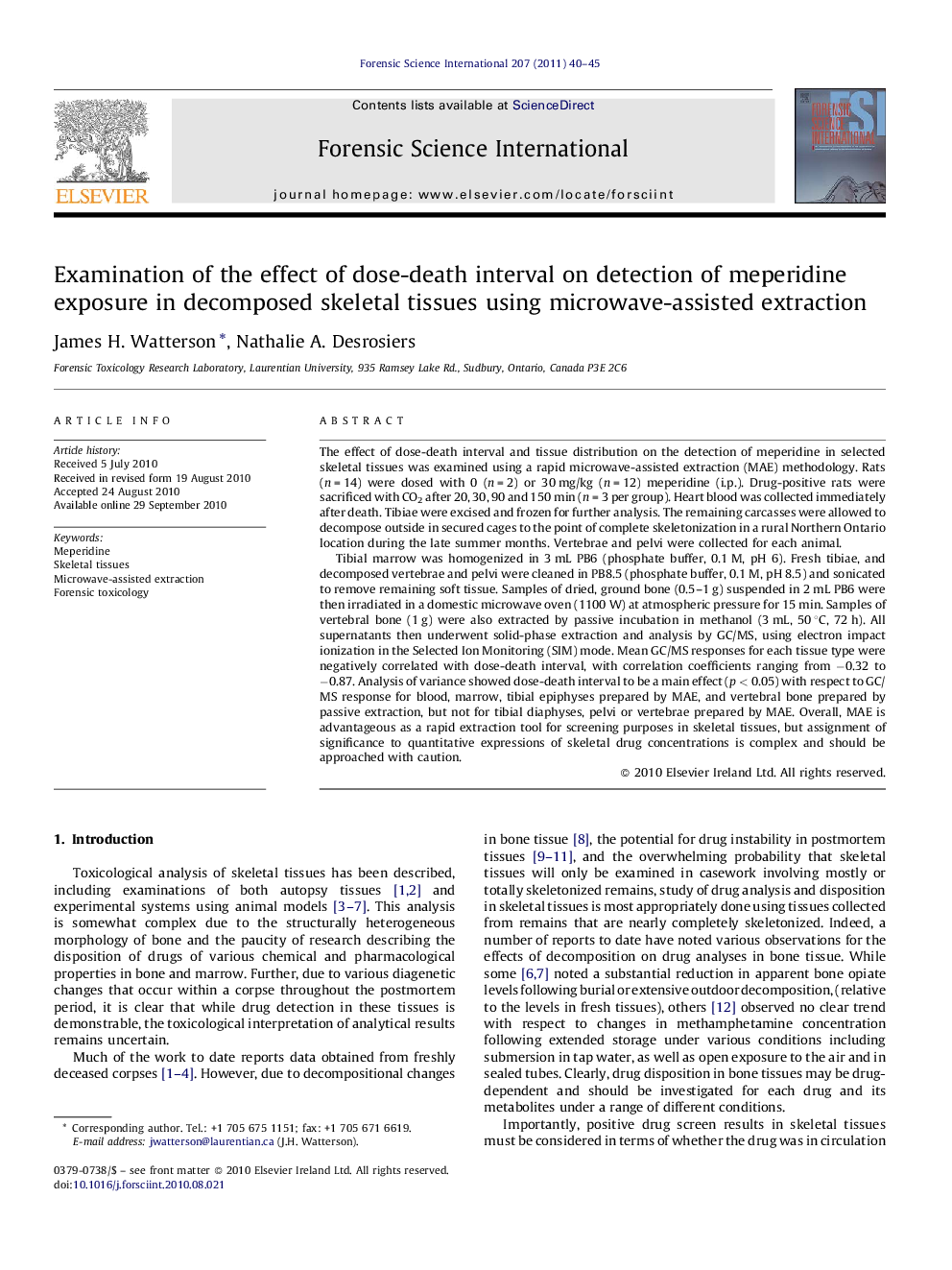| کد مقاله | کد نشریه | سال انتشار | مقاله انگلیسی | نسخه تمام متن |
|---|---|---|---|---|
| 96853 | 160474 | 2011 | 6 صفحه PDF | دانلود رایگان |

The effect of dose-death interval and tissue distribution on the detection of meperidine in selected skeletal tissues was examined using a rapid microwave-assisted extraction (MAE) methodology. Rats (n = 14) were dosed with 0 (n = 2) or 30 mg/kg (n = 12) meperidine (i.p.). Drug-positive rats were sacrificed with CO2 after 20, 30, 90 and 150 min (n = 3 per group). Heart blood was collected immediately after death. Tibiae were excised and frozen for further analysis. The remaining carcasses were allowed to decompose outside in secured cages to the point of complete skeletonization in a rural Northern Ontario location during the late summer months. Vertebrae and pelvi were collected for each animal.Tibial marrow was homogenized in 3 mL PB6 (phosphate buffer, 0.1 M, pH 6). Fresh tibiae, and decomposed vertebrae and pelvi were cleaned in PB8.5 (phosphate buffer, 0.1 M, pH 8.5) and sonicated to remove remaining soft tissue. Samples of dried, ground bone (0.5–1 g) suspended in 2 mL PB6 were then irradiated in a domestic microwave oven (1100 W) at atmospheric pressure for 15 min. Samples of vertebral bone (1 g) were also extracted by passive incubation in methanol (3 mL, 50 °C, 72 h). All supernatants then underwent solid-phase extraction and analysis by GC/MS, using electron impact ionization in the Selected Ion Monitoring (SIM) mode. Mean GC/MS responses for each tissue type were negatively correlated with dose-death interval, with correlation coefficients ranging from −0.32 to −0.87. Analysis of variance showed dose-death interval to be a main effect (p < 0.05) with respect to GC/MS response for blood, marrow, tibial epiphyses prepared by MAE, and vertebral bone prepared by passive extraction, but not for tibial diaphyses, pelvi or vertebrae prepared by MAE. Overall, MAE is advantageous as a rapid extraction tool for screening purposes in skeletal tissues, but assignment of significance to quantitative expressions of skeletal drug concentrations is complex and should be approached with caution.
Journal: Forensic Science International - Volume 207, Issues 1–3, 15 April 2011, Pages 40–45